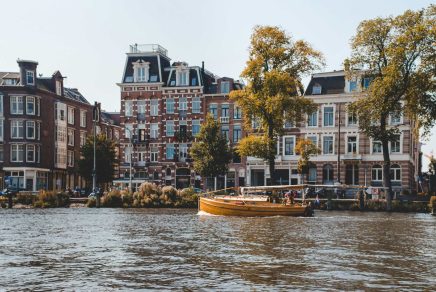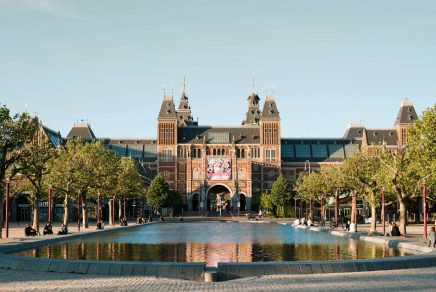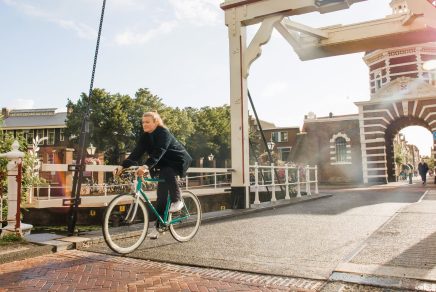Amsterdam isn’t just a city—it’s a living, breathing museum, and sometimes, you don’t even have to step inside a building to appreciate it. Strolling along its iconic canals, you’ll see crooked houses defying gravity, historical architecture with a practical twist, and tiny Delft-style porcelain replicas of the city itself. And if you’ve ever wondered how this place was built on what’s essentially a swamp, well, that’s a story in itself.
This guide takes you beyond the typical postcard version of Amsterdam and straight into its most fascinating, offbeat details—from the smallest historical houses to the secrets of canal boat life and how tulips took over the country.
Why are Amsterdam’s houses so crooked?
Walking through the Jordaan neighborhood, one of Amsterdam’s most picturesque districts, you might notice something strange: the buildings lean, twist, and tilt like they’ve had one too many Heinekens. No, it’s not an illusion—Amsterdam’s architecture is unique, and there’s a reason for its slightly wonky charm.
The city was built on a swampy foundation, and back in the day, houses were supported by wooden poles driven deep into the ground. Over time, those poles began to rot, causing the buildings to sink unevenly. Some homes now lean into each other for support, creating entire rows of what look like drunkenly swaying houses. Today, new buildings use reinforced concrete foundations, but the historic, off-kilter charm of Amsterdam remains intact.
And if you feel like the houses are leaning toward you, they probably are! Until the 19th century, homes were deliberately built with an overhanging upper floor so that rainwater wouldn’t drip directly onto the lower levels.
The world’s first multinational empire started here
Amsterdam wasn’t just built on canals; it was built on trade, innovation, and a whole lot of ambition. In 1602, the Dutch East India Company (VOC) was founded, making it the world’s first multinational corporation. The city boomed, money flowed, and so did ideas. This era, known as the Dutch Golden Age, wasn’t just about wealth—it also brought about a cultural explosion, with artists like Rembrandt, Vermeer, and Steen painting their way into history.
With so much new money, Amsterdam’s leaders decided to expand and beautify the city, leading to the construction of the canal belt (Grachtengordel)—a feat of urban planning that still amazes today. The Jordaan district, now a trendy hub of shops and cafés, was originally built to house working-class families and immigrants drawn to Amsterdam’s growing economy.
The oldest house on the oldest street
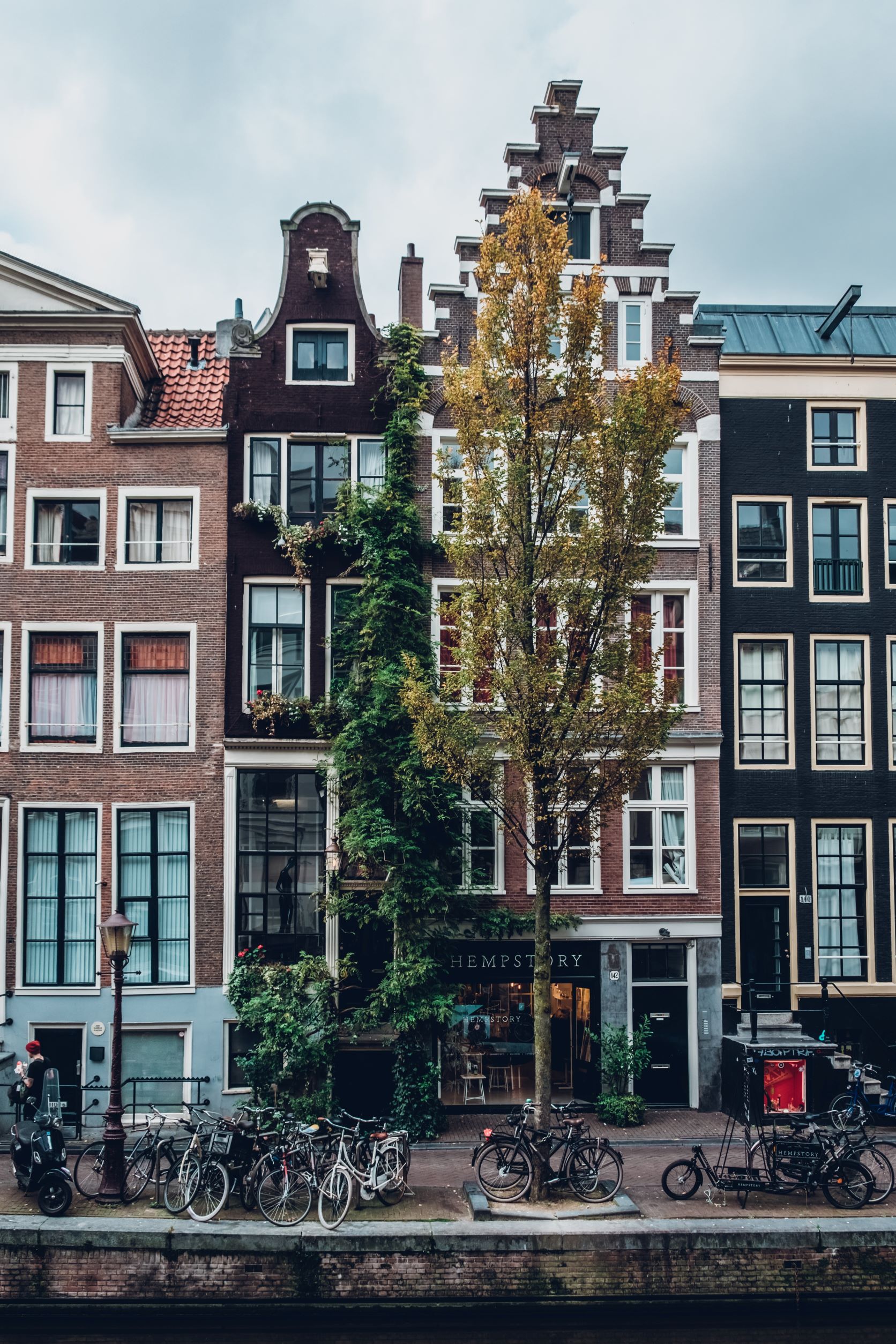
For a city with so much history, you’d expect some seriously old houses, and Amsterdam delivers. The oldest house can be found on Warmoesstraat, dating back to 1485. Its modest, unassuming façade hides a deep past, with wooden beams that have stood the test of time.
Warmoesstraat itself was built the hard way—by hand, with workers digging on either side to prevent it from sinking. Over the years, the street kept sinking back into the water, leading to a constant cycle of digging, rebuilding, and reinforcing.
Life on a houseboat: floating through Amsterdam
If you’ve ever dreamt of living on a boat, Amsterdam is the place to do it. With over 2,500 houseboats lining the city’s canals, they’ve become prestige homes rather than budget alternatives.
Houseboat life has its perks:
- No sinking buildings! Unlike Amsterdam’s land-based homes, houseboats don’t need wooden foundations—so they aren’t tilting anytime soon.
- A front-row seat to swans and ducks. Imagine sipping your morning coffee while feeding swans right from your window.
- Flood-proof living. If Amsterdam ever floods, houseboats will just float higher, while everyone else scrambles for dry ground.
If you want a taste of the houseboat lifestyle, you can visit the Houseboat Museum or even rent one for a night.
Amsterdam’s famous canals: more than just a pretty view
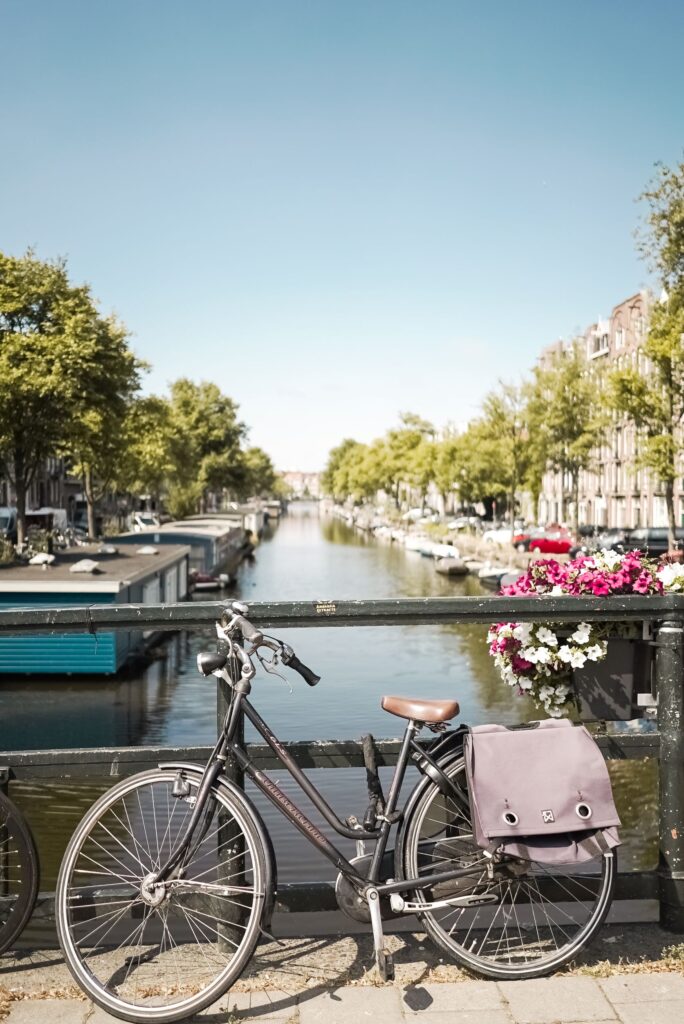
Nicknamed the “Venice of the North”, Amsterdam’s canals aren’t just for boat tours and postcard photos. They were a revolutionary solution to an engineering challenge—keeping a city built below sea level from flooding.
Here’s what makes them special:
- Over 100 km of canals weave through the city.
- More than 1,500 bridges cross the water—more than in Venice!
- The oldest canals form the Grachtengordel, encircling the city and lined with over 1,500 historic buildings.
Amsterdam’s tulip obsession
Holland is responsible for 70% of the world’s commercial flowers, and nowhere is that more obvious than in Amsterdam. Springtime visitors should head to the Bollenstreek Flower Strip, where millions of tulips burst into bloom, or take a trip to the famous Keukenhof Gardens, just an hour outside the city.
But did you know that tulips once nearly crashed the Dutch economy? In the 1600s, tulip bulbs became so valuable that they cost more than houses. This craze, known as Tulip Mania, was essentially the world’s first economic bubble—until it popped, and prices collapsed. Fortunately, tulips survived the financial disaster and are now a beloved Dutch symbol.



